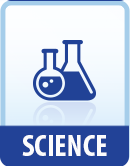|
This section contains 196 words (approx. 1 page at 300 words per page) |
A laboratory test developed by biochemist Bruce N. Ames to determine the possible carcinogenic nature of a substance. The Ames test involves using a particular strain of the bacteria Salmonella typhimurium that lacks the ability to synthesize histidine and is therefore very sensitive to mutation. The bacteria are inoculated into a medium deficient in histidine but containing the test compound. If the compound results in DNA damage with subsequent mutations, some of the bacteria will regain the ability to synthesize histidine and will proliferate to form colonies. The culture is evaluated on the basis of the number of mutated bacterial colonies it produced. The ability to replicate mutated colonies leads to the classification of a substance as probably carcinogenic.
The Ames test is a test for mutagenicity not carcinogenicity. However, approximately nine out of 10 mutagens are indeed carcinogenic. Therefore, a substance that can be shown to be mutagenic by being subjected to the Ames test can be reliably classified as a suspected carcinogen and thus recommended for further study.
Resources
Books
Taber, C. W. Taber's Cyclopedic Medical Dictionary. Philadelphia: F. A. Davis, 1990.
Turk J., and A. Turk. Environmental Science. Philadelphia: W. B. Saunders, 1988.
|
This section contains 196 words (approx. 1 page at 300 words per page) |


